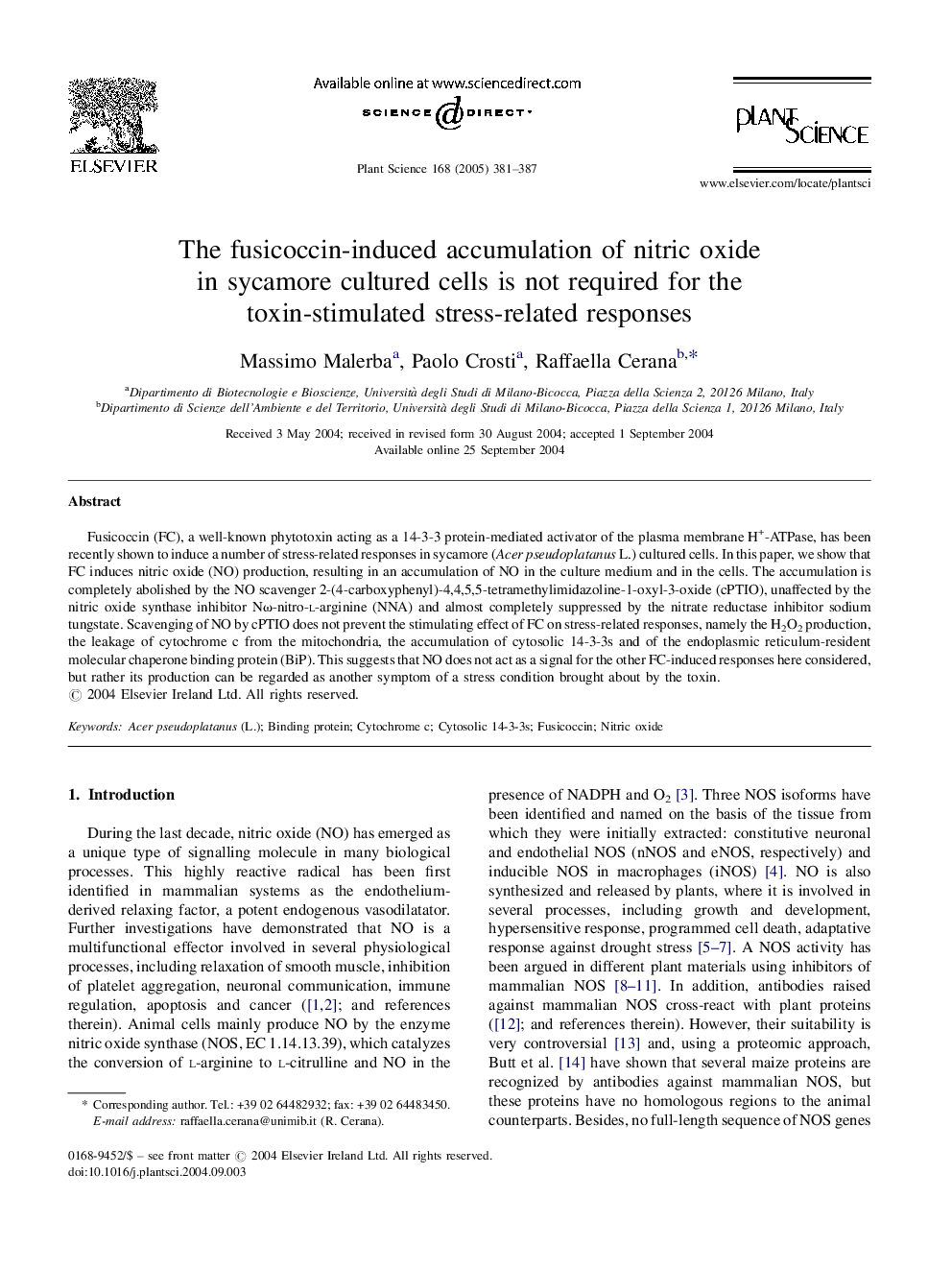| Article ID | Journal | Published Year | Pages | File Type |
|---|---|---|---|---|
| 10840783 | Plant Science | 2005 | 7 Pages |
Abstract
Fusicoccin (FC), a well-known phytotoxin acting as a 14-3-3 protein-mediated activator of the plasma membrane H+-ATPase, has been recently shown to induce a number of stress-related responses in sycamore (Acer pseudoplatanus L.) cultured cells. In this paper, we show that FC induces nitric oxide (NO) production, resulting in an accumulation of NO in the culture medium and in the cells. The accumulation is completely abolished by the NO scavenger 2-(4-carboxyphenyl)-4,4,5,5-tetramethylimidazoline-1-oxyl-3-oxide (cPTIO), unaffected by the nitric oxide synthase inhibitor NÏ-nitro-l-arginine (NNA) and almost completely suppressed by the nitrate reductase inhibitor sodium tungstate. Scavenging of NO by cPTIO does not prevent the stimulating effect of FC on stress-related responses, namely the H2O2 production, the leakage of cytochrome c from the mitochondria, the accumulation of cytosolic 14-3-3s and of the endoplasmic reticulum-resident molecular chaperone binding protein (BiP). This suggests that NO does not act as a signal for the other FC-induced responses here considered, but rather its production can be regarded as another symptom of a stress condition brought about by the toxin.
Related Topics
Life Sciences
Agricultural and Biological Sciences
Plant Science
Authors
Massimo Malerba, Paolo Crosti, Raffaella Cerana,
